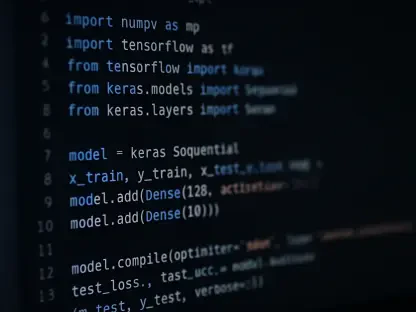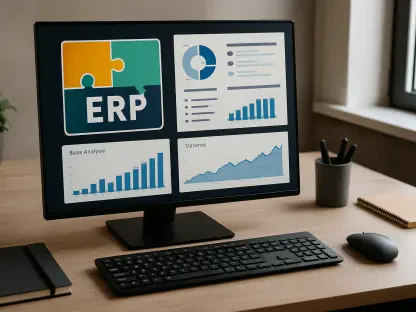In today’s rapidly evolving application landscape, security is at the forefront of development operations, especially within Kubernetes environments. Joining us to delve into this critical subject is Anand Naidu, a proficient expert in both frontend and backend development. Anand shares his expert insights into the complexities of Kubernetes security and best practices for maintaining secure applications amidst an increasingly complex dependency ecosystem.
What is the principle of least privilege, and why is it important in Kubernetes environments?
The principle of least privilege is a foundational security concept that helps to minimize risks by ensuring that users and systems only have access to necessary resources to perform their duties. In Kubernetes environments, this means configuring each user, application, and service with the least permissions necessary to reduce the potential attack surface. This way, even if an attacker compromises one component, they cannot exploit other parts of the system. By limiting privileges, we also safeguard against inadvertent errors, like a reporting engine accidentally deleting critical data due to overly broad permissions.
How would you implement Role-Based Access Control (RBAC) to enhance security?
Implementing RBAC in Kubernetes involves defining roles with specific permissions and assigning them to users or service accounts. The goal is to create a fine-grained permission model where each entity only has access to the resources and actions they require. It’s crucial to strike a balance between granularity and ease of management. By adopting RBAC, you can operationalize the principle of least privilege, ensuring that every action within your Kubernetes environment is tightly controlled and monitored.
Can you describe best practices for managing secrets in Kubernetes?
Managing secrets involves a few critical practices, such as storing them securely outside your source code, using environment variables or configuration files. Dedicated secret management tools like HashiCorp Vault or Azure Key Vault are essential. These tools provide robust access control and secret rotation capabilities without requiring redeployment. It’s also important to integrate secrets management with your CI/CD pipelines to ensure secure injection and handling throughout the development lifecycle.
What tools or methods would you use for secrets management, and why?
I recommend using tools like HashiCorp Vault or Azure Key Vault for secrets management due to their extensive support for managing, storing, and rotating credentials and certificates. These tools allow for secure retrieval of secrets at runtime and can integrate seamlessly with Kubernetes, ensuring that secrets are accessed only by authorized applications. They can also automate secret rotations, alerting you when an update is due, which bolsters overall system security.
Why are explicit network policies important in Kubernetes?
Explicit network policies are crucial because they define how pods communicate within a Kubernetes cluster, controlling inbound and outbound traffic. By default, Kubernetes allows unrestricted communication between pods, which can be risky. Explicit policies help prevent lateral movement within the network, protecting against potential threats that could spread from compromised pods. Restricting unnecessary network paths reduces the risk of data exfiltration or unauthorized access.
How do network policies help in preventing lateral movement between pods?
Network policies act as a firewall between Kubernetes pods, controlling data flow based on specified rules. By carefully crafting these policies, we can isolate pods from unnecessary communication, limiting attacker capabilities significantly. If a pod is compromised, network policies ensure that the threat remains contained, reducing the risk of unauthorized access to other sensitive areas within the cluster.
What are the preferred methods for integrating Kubernetes clusters with existing authentication infrastructures?
Integrating Kubernetes with existing authentication infrastructures can streamline user management and enhance security. Preferred methods include using cloud provider-managed identities or federating with existing identity providers such as LDAP. For instance, in Azure environments, Microsoft Entra ID is advantageous as it allows seamless integration with Azure RBAC for unified user management across the cloud ecosystem, leveraging existing credentials for authentication.
How do system-managed identities work, and what are their advantages in Kubernetes environments?
System-managed identities eliminate the need for application-specific service accounts by assigning a unique identity to each Kubernetes service or resource. These identities simplify credential management because they are automatically created and delegated. The major advantage is enhanced security, as they reduce the risk of credential compromise, preventing the need to store sensitive information like passwords or tokens within the application or in code.
What tools do you recommend for auditing Kubernetes configurations and ensuring they adhere to best practices?
I recommend tools like KubeLinter or Config-lint for auditing Kubernetes configurations. These tools help ensure that your configuration adheres to best practices by validating YAML files against established schemas. Additionally, version control systems should be utilized to track and audit changes over time, which allows for easy identification of configuration drifts that might introduce security vulnerabilities.
How can Pod Security Standards be enforced in Kubernetes?
Pod Security Standards can be enforced using the Pod Security Admission Controller in Kubernetes. This lets you define security policies, such as prohibiting the use of privileged containers or running applications as root, and ensures containers adhere to these restrictions before deployment. Standard policies reduce risk by preventing deployments that could potentially expose vulnerabilities.
What are the CIS Kubernetes Benchmarks, and why are they important?
The CIS Kubernetes Benchmarks are a set of guidelines provided by the Center for Internet Security to reinforce best practices for securing Kubernetes clusters. These benchmarks are essential because they help organizations identify and implement security measures to reduce the likelihood of breaches and ensure that clusters are resilient against potential attacks. Using these benchmarks as a foundation can significantly improve the security posture of a Kubernetes environment.
How would you use tools like Kube-Bench for compliance monitoring?
Kube-Bench is a tool that automates the process of checking Kubernetes clusters against the CIS Benchmarks. It’s valuable because it provides real-time insights into the cluster’s security status, highlighting any deviations from best practices. Regular use of Kube-Bench helps track compliance over time, ensuring that any configuration drifts are promptly identified and corrected to maintain a secure environment.
What is the significance of container image scanning, and which tools would you use?
Container image scanning is crucial for identifying vulnerabilities within images used in Kubernetes deployments. Scanners like Trivy provide an extra layer of security by analyzing images for outdated or vulnerable packages before and during deployment. Frequent scanning ensures continued defense against emerging threats, offering peace of mind that your deployments are secure from known vulnerabilities.
Why is immutable infrastructure important for container images, and how can it be achieved?
Immutable infrastructure ensures that container images remain consistent and predictable across environments by incorporating all dependencies at build time. This approach is significant as it prevents unexpected changes or updates that could introduce vulnerabilities. Achieving immutability involves creating images with all dependencies included and avoiding runtime installs. Utilizing tools for reproducible builds and enforcing read-only filesystems can further support immutable infrastructure.
How would you manage dependencies in your source code repositories to ensure security?
To securely manage dependencies, using tools like Renovate or Dependabot is key. These automate dependency checks, providing updates through pull requests, thus ensuring vulnerabilities are quickly resolved. Critical here is to rely on trusted sources and enforce the use of signed packages to safeguard against tampered dependencies. Regularly auditing dependencies and their licenses also forms an integral part of maintaining a secure codebase.
What best practices would you recommend for securing CI/CD pipelines?
Securing CI/CD pipelines involves incorporating multiple best practices such as source code scanning for secrets, and ensuring image contents are verified. Auto-failing builds that do not meet security screenings, such as linting and vulnerability scanning, keeps insecure code from progressing. Ensuring that only authorized personnel have access to modify pipeline configurations, and integrating with secret management tools for secure credential handling, fortifies the entire CI/CD process.
How can secret injection be securely managed in CI/CD processes?
In CI/CD processes, secret injection can be securely managed by integrating with secret management tools to fetch credentials at runtime rather than storing them in source code. Ensuring that secrets are obscured in logs and avoiding passing them as command-line arguments is also vital. This separation maintains secrecy integrity and mitigates risks of exposing sensitive information inadvertently.
Why is deployment observability important, and what tools can assist in this?
Deployment observability allows one to quickly assess the versions and statuses of various services running in production, which is essential for diagnosing issues and implementing rollbacks swiftly. Tools like Octopus Deploy provide dashboards for monitoring deployments, offering transparency and control. Enhanced visibility in deployment status helps identify if a new release introduces complications, facilitating timely resolutions.
How do real-time monitoring tools like Prometheus and Grafana help ensure cluster security?
Real-time monitoring tools such as Prometheus and Grafana provide valuable insights into cluster performance and security through metrics and alert systems. They enable the identification of anomalous behaviors that may indicate security incidents. With these tools, operations teams can proactively respond to unusual activity by setting up alerts for abnormal resource usage, ensuring clusters operate securely and efficiently at all times.
Why is centralized logging important, and which tools would you use for managing logs?
Centralized logging integrates logs from all services into a single system, making it easier to track interactions and diagnose issues across a Kubernetes cluster. Tools like Loki or Elasticsearch are effective for log aggregation and searching. By centralizing logs, you ensure a streamlined approach to monitoring and incident management, ultimately supporting quicker detection and resolution of security issues.
Do you have any advice for our readers?
Embrace a security-first mindset from the beginning of any Kubernetes deployment. By integrating security measures into every stage of the development lifecycle, from planning to maintenance, and using tools to enforce these policies, you’ll be better equipped to handle evolving threats. Stay informed about the latest trends and updates within both the DevOps and security landscapes to effectively safeguard your environments.









